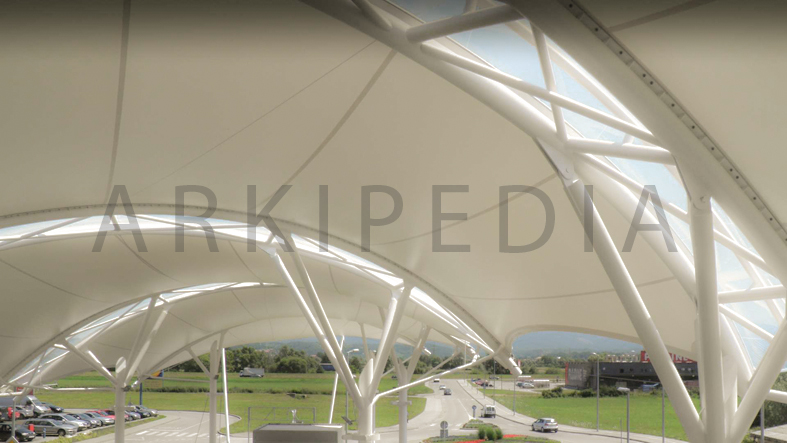What is Textile Architecture? Where to Use?

What is textile architecture and in which areas is it used, the influence of which we expect to increase today and in the near future? We will provide information about projects and construction techniques that exemplify the use of textile architecture on facades.

Why is textile preferred in architecture?
In today’s buildings, the elements of weight, flexibility and tensile strength, which must be balanced in order to create a design, have become very important. If we wanted to define textile materials in architecture, a very long explanation would be required.

In architecture, textile, in other words membrane technology, is preferred because it is an aesthetic and easily shaped and cleaned material that can achieve the mentioned features at the highest level.
Another factor why it is preferred is its durability against disinformation, tearing and longevity. (About 30 years)

What is textile in architecture?
Textile in architecture is a flexible, light and durable, waterproof and dirt-proof material with nylon, polyester or glass raw materials, which can be a wired or stretched textile cover.
What is a textile architecture system?
It is a special type of fabric obtained by weaving fibers that are the carrier elements, unlike other materials. This fabric (membrane) is knitted by passing the threads successively under and over each other in a grid pattern. Due to the very high knitting density, materials in textile architecture generally have waterproof properties.
The membrane (fabric) surface is coated on both sides with PVC, PTFE and Silicone to support the waterproof feature and add self-cleaning feature to the product.

What are the classes of textile material?
Membrane, which is a textile material in architecture, is examined in three classes: A, B and C.
To explain it basically, class A is prepared by coating with PTFE chemical, class B with PVC or Chlorepen rubber, and class C with PVC, cloprene or chlorosulfonate. Other distinctions such as density and weight are also available in these classes.

